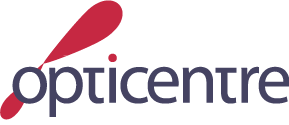DITA and XML Content Management
DITA and XML Content Management is an XML-based architecture for authoring, producing, and delivering technical information. The architecture and a related DTD and a W3C-Schema was developed by IBM
DITA (Darwin Information Typing Architecture) is an XML-based architecture for authoring, producing, and delivering technical information. The architecture and a related DTD and a W3C-Schema was developed by IBM.
The entire name of the architecture has this combined explanation:
Darwin: it uses the principles of specialization and inheritance
Information Typing: it capitalizes on the semantics of topics (concept, task, reference) and of content (messages, typed phrases, semantic tables)
Architecture: it provides vertical headroom (new applications) and edgewise extension (specialization into new types) for information
Unlike book-oriented approaches that are based on chapters and pages, DITA uses topics - small chunks of information that can be easily reused across various contexts and deliverables. DITA also has built-in extensibility support, meaning you can customize document type definitions (or DTDs) without breaking compatibility with existing applications and processes. For these reasons and more, DITA goes beyond any previous approach in helping you overcome barriers to XML adoption, maximize content reuse, and reduce information redundancies.
DITA specifies a number of topic types, such as Task, Concept and Reference. Within DITA, a Task topic is intended for a procedure describing how to accomplish a task; lists a series of steps that users follow to produce a specified outcome; identifies who does what, when, where and how. A Reference topic is for topics that describe command syntax, programming instructions, other reference material; usually detailed, factual material.
Read more
DocBook is a markup language for technical documentation, originally intended for authoring technical documents, related to computer hardware and software but which can be used for any other sort of documentation.
One of the principal benefits of DocBook is that it enables its users to create document content in a presentation-neutral form that captures the logical structure of the content; that content can then be published in a variety of formats, including HTML, PDF, man pages and HTML Help, without requiring users to make any changes to the source.
Read more
DocBook provides a system for writing structured documents using SGML or XML. It is particularly well-suited to books and papers about computer hardware and software, though it is by no means limited to them.
In short, DocBook is an easy-to-understand and widely used DTD. Dozens of organizations use DocBook for millions of pages of documentation, in various print and online formats, worldwide.
Read more
The DocBook format was designed by OASIS consortium specifically for technical documentation. It provides a rich set of tags to describe the content of your document.
Here is a number of key points that help understand what DocBook is:
- DocBook is a markup language
It is very similar to HTML in this respect. The tags give some structure to your document, and appear intermixed with the informational text.
This peculiar point makes it a revolution with respect to documentation translation, because the DTP phase (making the text look nice) is done once for all indirectly by tagging the original text. The translators only have to translate "in between the tags" and by pressing a single keystroke the translated output is generated. - It is made for technical documentation
DocBook is perfectly suited for car engine parts documentation. However, it is strongly biased towards computer programs documentation. - Technically, DocBook is a SGML or XML DTD
This means that one can take profit of the many SGML and XML aware tools. While DocBook as an XML implementation is quite recent, it has a long history as a SGML implementation. - DocBook is not a presentation language
DocBook carefully cares about not specifying how the final documentation looks like. This allows the writer to concentrate on the organization and meaning of the document he or she writes. All the presentation issues are devolved to style sheets.
This ensures all your documents have a consistent appearance, whoever should be the technical writer. - DocBook is customizable
It is quite easy to customize the DTD to meet one's need thanks to its modular organization. But one must be aware that this must be done with respect to SGML/XML conventions and that it might introduce incompatibilities.
If DocBook is used in conjunction with Norman Walsh's modular style sheets, it is also possible to customize the way a DocBook file can be printed or put online too. - DocBook is comprehensive
The large number of tags defined in DocBook guarantees that it can accommodate a wide range of situations and of processing expectations.
This in turn makes it a bit difficult to learn, but one can manage writing documentation knowing only a limited set of tags and referring to the reference documentation when needed.
Read more
An XML content management system can also transform your content to target different media and devices including the web, CD, offline presentations, print catalogs, PDA devices, and wireless phones. By creating content once and re-using it across different media, you ensure message consistency and relevance across all channels of communication. In this way, XML content management allows companies to more effectively engage in e-business through content reuse, separation of content from presentation, platform-independent interchange, painless integration, and multi-channel publishing.
Read more
Web content management allows business users and non-technical personnel users to maintain and develop a website by separating its structure and content from the design. This replaces traditional methods that require knowledge of HTML and design techniques, and with system-wide rules, ensures that aspects such as navigation and page layouts are handled consistently. This allows you to control the website without worrying about breaking the corporate style, how to add a new section to the menu, or what additional costs your changes might incur, and instead concentrate on using the website to more effectively communicate with customers, potential customers, partners.
Read more
 English
English


 Bulgarian
Bulgarian